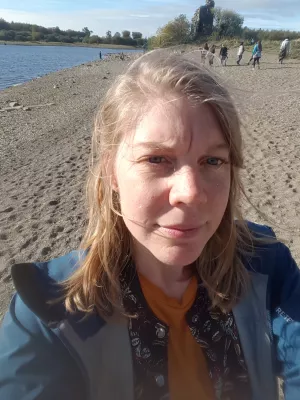
Veronica Hederström
Forskare

Pollinator-mediated effects of landscape-scale land use on grassland plant community composition and ecosystem functioning – seven hypotheses
Författare
Summary, in English
Environmental change is disrupting mutualisms between organisms worldwide. Reported declines in insect populations and changes in pollinator community compositions in response to land use and other environmental drivers have put the spotlight on the need to conserve pollinators. While this is often motivated by their role in supporting crop yields, the role of pollinators for reproduction and resulting taxonomic and functional assembly in wild plant communities has received less attention. Recent findings suggest that observed and experimental gradients in pollinator availability can affect plant community composition, but we know little about when such shifts are to be expected, or the impact they have on ecosystem functioning. Correlations between plant traits related to pollination and plant traits related to other important ecosystem functions, such as productivity, nitrogen uptake or palatability to herbivores, lead us to expect non-random shifts in ecosystem functioning in response to changes in pollinator communities. At the same time, ecological and evolutionary processes may counteract these effects of pollinator declines, limiting changes in plant community composition, and in ecosystem functioning. Despite calls to investigate community- and ecosystem-level impacts of reduced pollination, the study of pollinator effects on plants has largely been confined to impacts on plant individuals or single-species populations. With this review we aim to break new ground by bringing together aspects of landscape ecology, ecological and evolutionary plant–insect interactions, and biodiversity–ecosystem functioning research, to generate new ideas and hypotheses about the ecosystem-level consequences of pollinator declines in response to land-use change, using grasslands as a focal system. Based on an integrated set of seven hypotheses, we call for more research investigating the putative pollinator-mediated links between landscape-scale land use and ecosystem functioning. In particular, future research should use combinations of experimental and observational approaches to assess the effects of changes in pollinator communities over multiple years and across species on plant communities and on trait distributions both within and among species.
Avdelning/ar
- Biodiversitet och bevarandevetenskap
- BECC: Biodiversity and Ecosystem services in a Changing Climate
- Centrum för miljö- och klimatvetenskap (CEC)
- Artbildning, anpassning och samevolution
- Biodiversitet
- LU profilområde: Naturbaserade framtidslösningar
Publiceringsår
2023-12-20
Språk
Engelska
Publikation/Tidskrift/Serie
Biological Reviews
Dokumenttyp
Artikel i tidskrift
Förlag
John Wiley & Sons Inc.
Ämne
- Ecology
Nyckelord
- community composition
- habitat fragmentation
- insect decline
- plant community assembly
- plant evolutionary response
- plant population dynamics
- plant reproduction
- pollen limitation
- pollinator availability
- seed availability
Status
Epub
Forskningsgrupp
- Biodiversity and Conservation Science
- Speciation, Adaptation and Coevolution
ISBN/ISSN/Övrigt
- ISSN: 1464-7931